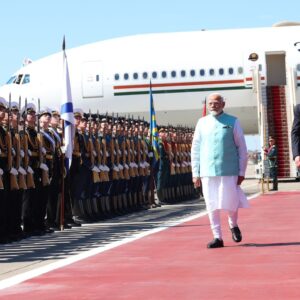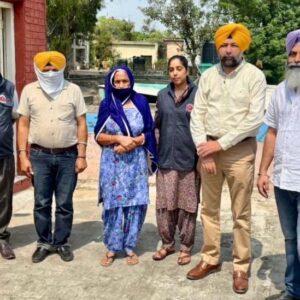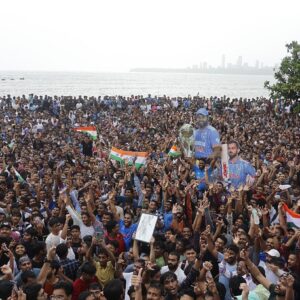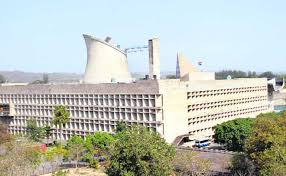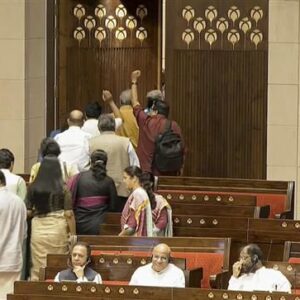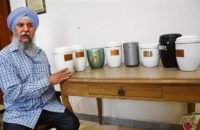The Union Health Ministry said on Friday that the rate of rise in infections appeared to be slowing, a statement that came even as the country reported 1,007 more infections with 23 new deaths in 24 hours.
The ministry said in its daily press briefing that the rate at which the number of coronavirus cases in the country was becoming double in the last one week was 6.2 days, as against three days before the nationwide lockdown was imposed.
Joint Secretary in the Health Ministry Lav Agarwal claimed that India has been doing better than many other countries on the outcome ratio, which is the number of recoveries from coronavirus infection versus the number of deaths.
“If 80 per cent of the patients in India are recovering and in 20 per cent cases deaths are being reported, then by that standard India has been doing a little better than many other nations on the outcome ratio,” he said.
“Before lockdown, the doubling rate of coronavirus cases was 3 days. Going by the number of cases in the last seven days, the doubling rate has been 6.2 days. In 19 states and Union Territories the doubling rate is less than the national average,” he said.
The health ministry official also said the average growth factor of cases from April 1 has been 1.2, whereas between March 15 and 31 it was 2.1.
This decline of 40 per cent was due to increase in testing, including that of cases with severe acute respiratory infections (SARI) and influenza-like illness (ILI), Agarwal said.
He also informed reporters that 1,919 dedicated COVID-19 hospitals with 1.73 lakh isolation beds and 21,800 ICU beds have been readied till now.
The number of novel coronavirus cases in India rose by 1,007 and 23 deaths were reported in 24 hours, taking the tally of total infections to 13,387 and fatalities to 437, the joint secretary in the health ministry said, adding 1,749 people have been cured of the infection so far, which is 13.06 per cent of the total patients.
Agarwal further informed that five lakh rapid antibody testing kits, which arrived from China on Thursday, are being distributed to states for districts with high case burden.
Head of Epidemiology and Communicable diseases at Indian Council of Medical Research (ICMR) Dr Raman R Gangakhedkar said 3,19,400 COVID-19 tests have been conducted so far in the country.
“Out of these, 28,340 tests were conducted on Thursday, of which 23,932 were done at 183 laboratories under ICMR network and the rest at 80 private labs,” he said.
Agarwal said a Group of Ministers held a meeting on Friday to chalk out a roadmap about the lockdown and reviewed efforts of science and technology institutes in diagnosis, vaccines, drugs, hospital equipment accessories and general wellness.
The country’s coronavirus count currently stands at 13,835 with 452 deaths, the health ministry’s website shows.
‘Scaling back’
The ministry had said earlier that it would scale down containment operations if no secondary coronavirus was reported from a quarantine zone for at least four weeks after the last confirmed test has been isolated and all his contacts have been followed up for 28 days.
According to the ministry’s ‘Updated containment plan for large outbreaks COVID-19’, a containment operation (large outbreak or cluster) is deemed to be over 28 days from the date the last case in that zone tests negative.
The closing of the surveillance for the clusters could be independent of one another provided there is no geographic continuity between clusters. However the surveillance will continue for severe acute respiratory infection (SARI) and influenza-like illness (ILI). States shall ensure that all required steps are taken to contain clusters within the large outbreak and chain of transmission is broken, it said.
The document stated that in India also, clusters and large outbreaks have been noted in parts of the country and unless they are contained in time, the risk of further spread remains very high. Large number of cases has been reported from Maharashtra, Delhi, Tamil Nadu, Madhya Pradesh and Rajasthan.
The Centre has declared 170 hotspots —123 hotspot districts with large outbreaks and 47 hotspot districts with clusters. Besides, it has identified 207 non-hotspot districts with clusters.
In a bid to utilise the extended lockdown period to the maximum extent to contain the spread of coronavirus, states have been asked by the ministry to classify districts witnessing higher number of cases or high growth rate as hotspots, districts where some cases have been found as non-hotspots, and those which have reported no cases as green zones.
According to the Health Ministry’s document, “containment for large outbreaks through geographic quarantine strategy calls for near absolute interruption of movement of people to and from a relatively large defined area where there is single large outbreak or multiple foci of local transmission” of COVID-19.
In simple terms, it is a barrier erected around the focus of infection. Geographic quarantine shall be applicable to such areas reporting large outbreak and/or multiple clusters of COVID-19 spread over multiple blocks of one or more districts that are contiguous based on the distribution of cases and contacts.
According to the plan, the authorities will do extensive contact tracing and active search for cases in containment zone, test all suspect cases and high-risk contacts, isolate all suspect or confirmed cases, implement social distancing measures and intensive risk communication as part of the cluster containment strategy.
For large outbreaks amenable to containment, the documents stated that the strategy will remain the same but vary in extent depending upon spread and response to be mounted to contain it.
Geographic quarantine and containment strategy will include defining the area of operation, active surveillance for cases and contacts in the identified geographic zone, expanding laboratory capacity for testing all suspect cases, high risk contacts and SARI cases and operationalising surge capacities created for isolation (COVID-19 hospitals/blocks) to hospitalise and manage all suspect or confirmed cases.
It will also include implementation of social distancing measures with strict perimeter control, providing chemoprophylaxis with hydroxychloroquine to all asymptomatic healthcare workers and asymptomatic household contacts of laboratory confirmed cases and further intensification of risk communication through audio, social and visual media.
“The objective of this containment plan is to stop the chain of transmission thus reducing the morbidity and mortality due to COVID-19,” the ministry sai




 Driving Naari Programme launched in Chandigarh
Driving Naari Programme launched in Chandigarh









